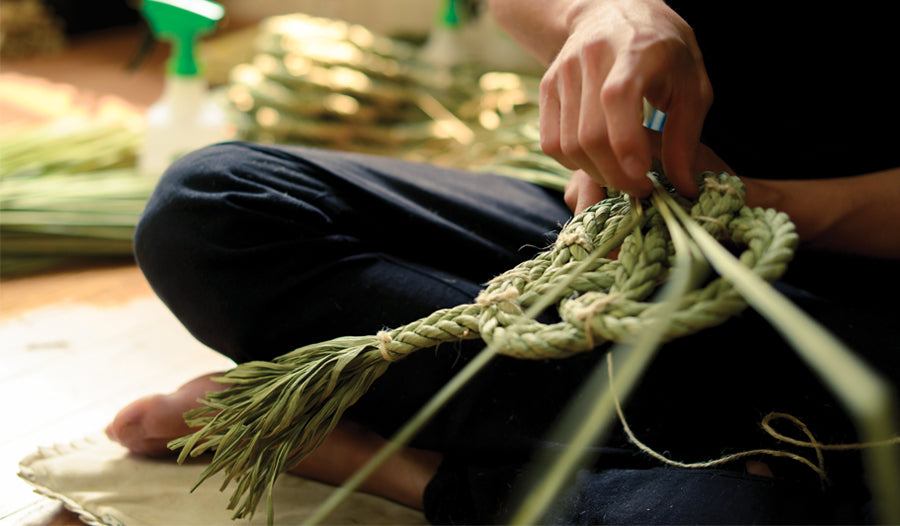
Straw Crafts and Sacred Ropes
The latest issue of Selvedge, Issue 101 Grow, explores the extraordinary diversity of straw. Read on for an excerpt of our article Rice Rocket, about weaving using rice straw in southern Japan.

On the main southern island of Kyushu, in the central mountainous area of Hinokage, in Miyazaki Prefecture, some places appear almost magical. Here, traditional mountain village life continues. In the steep-sided misty gorges, farmers carve out a mainly self-sufficient life; managing the land in a seasonal cycle of tasks. Close to Hinokage is Takachiho, a village of legends, and the site of the Amano Iwato shrine. Amaterasu, the Shinto sun goddess, is said to have hidden in a cave nearby, causing the world to go dark. Having been enticed out by music and dance, the placing of a sacred straw rope, shimenawa, acted as a guardian of the space preventing such a re-occurrence. Because of the proximity to the shrine, a special relationship developed and the birth of shimenawa culture probably began there.

Unusually, and unlike in other areas of Japan, these decorated ropes are displayed all year round, on both shrines and domestic, commercial and agricultural buildings: outside houses, shops and barns. In Hinokage one family continues to farm and has developed a straw craft business. Today, Kai Yoichiro, having returned to the countryside after being a teacher, is the third generation owner of Takubo wara. He directs the craftwork and manages the agricultural activities, which, depending on the time of year, occupy a lot of their time. Working alongside his father, grandfather and employees, they undertake every process from start to finish.

His grandmother, Tsuyako, started the business fifty years ago when she was asked to make a crane-decorated straw rope. The crane has a symbolic value and is linked to a happy marriage. Takubo wara was born at that moment. Soon, their crafted straw pieces were in demand and she and her husband worked hard to keep up with it. As was the case for many rural women in this region, she was already familiar with plaiting straw to make the thick comfortable straps for bamboo backpack baskets that are particularly suited to carrying loads of rice straw and other farm produce in the steep terrain.

Rice straw – wara – is a valuable resource. In the past it was used in many areas of Japan to make household goods; sandals for people, shoes for cattle and horses, raincoats and to fill futons. It was also burnt to provide ash for ceramic glazes. Growing rice is a cooperative activity requiring many hands during periods of intensive work that occur through the year. At Takubo wara, especially selected old varieties of rice such as Kogane-Nishiki, that yield long, soft straw, are harvested by hand and used for the skilled craft work...
Excerpt written by Hilary Burns
Find out how to read the rest of our article in Issue 101 Grow.
Photography by Yuko Kawashima
@kawashimayuko_peeco
